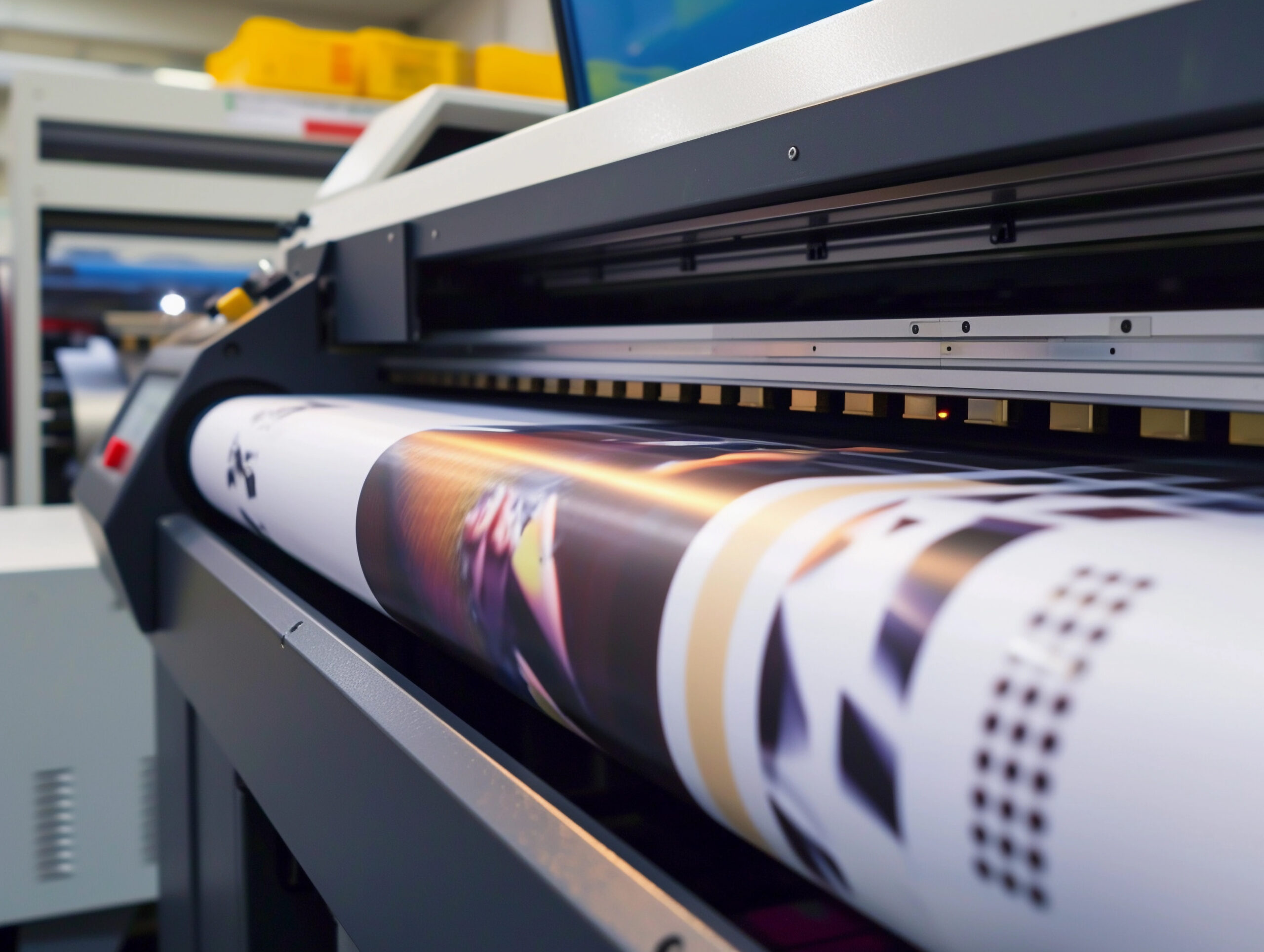The postcard sitting on my desk looks absolutely stunning. Rich colors, subtle texture, beautiful finish.
You’d never guess it was printed on paper made from discarded blue jeans, with algae-based ink, by a solar-powered press.
Five years ago, this level of quality in eco-friendly printing would have been unthinkable. Today, it’s just Tuesday.
I’ve spent fifteen years in the printing industry, watching the “green printing” revolution unfold from skeptical beginnings to what can only be described as a creative renaissance.
The journey has been remarkable – and if you’re still picturing sad, beige recycled paper and faded colors when you think of sustainable printing, prepare to have your mind blown.
The New Face of Eco-Friendly Printing
Let me tell you about Miguel, a graphic designer who came to our shop last month clutching mockups for his client’s high-end cosmetics brand. “I need this to look luxurious,” he insisted, “but the client is hardcore about sustainability.”
In the past, those requirements would have been at odds. Today, I showed Miguel options that made his eyes widen.
From Compromise to Competitive Edge
“I had no idea this was possible,” Miguel whispered, running his fingers across a sample printed on stone paper – yes, actual stone, ground into a powder, mixed with non-toxic resin, and transformed into water-resistant, tear-proof paper that feels like satin.
The marketing pieces we created for his client didn’t just meet their sustainability goals – they became a talking point, something customers actually commented on. “What is this printed on? It feels amazing!” The sustainability story became part of the brand experience.
That’s the plot twist in the sustainable printing story that most businesses haven’t caught onto yet: eco-friendly printing can be your competitive advantage, not your compromise.
Real Materials, Real Impact
Here’s what makes today’s sustainable printing truly revolutionary: we’re not just tweaking conventional materials to be marginally better. We’re completely reimagining what printing can be.
Last summer, I worked with a brewery releasing a seasonal beer. Instead of conventional labels, we printed on sheets made from spent grain – the very same byproduct created during their brewing process. The labels weren’t just sustainable; they told a circular story that perfectly complemented their brand.
Another client, an outdoor clothing company, opted for hang tags printed on seed paper. When planted, they grow into wildflowers. Customers literally posted videos of themselves planting their tags. Try getting that kind of engagement from regular paper.
Breaking Down the Options That Actually Work
Let’s cut through the greenwashing and talk about sustainable printing options that deliver genuine quality and environmental benefits.
Paper That’s Anything But Ordinary
The sustainable paper landscape has exploded beyond simple recycled options:
Hemp paper provides a subtle, artisanal texture that graphic designers are falling in love with. One wedding invitation designer told me, “The natural flecks and variation make each piece feel handcrafted.”
Agricultural waste papers – made from sugarcane bagasse, coffee chaff, or wheat straw – offer unique textures while diverting material from being burned or discarded.
Even traditional recycled papers have been revolutionized. The premium 100% post-consumer waste stocks I’m showing clients today have brightness, smoothness, and printing performance that matches or exceeds virgin paper.
Inks That Change the Game
The chemistry lab that is modern sustainable ink development has yielded some remarkable innovations:
Algae-based inks are capturing carbon during production rather than releasing it. They also happen to create some of the most vibrant blues and greens I’ve ever printed with.
Bioinks derived from fruit and vegetable waste are non-toxic enough that you could (though I don’t recommend it) lick the finished product without harm.
Even digital printing toners have evolved, with some newer formulations designed specifically to enhance deinking during recycling – making the entire lifecycle more sustainable.
Getting Personal: My Journey With Water
My own conversion to sustainable printing got serious when our shop installed a waterless press system five years ago. The environmental case was compelling – we’d save thousands of gallons annually – but I was skeptical about quality.
The first job we ran revealed something unexpected: the colors were more vibrant. Without water diluting the inks or dampening the paper, everything appeared more saturated and precise. Clients immediately noticed the difference.
“This is better than what you were doing before,” remarked one brutally honest customer who knew nothing about our new sustainable approach.
That’s when it clicked for me: sustainability wasn’t just about doing less harm; it was about discovering new methods that could actually improve results.
Small Changes, Big Impact
Not every sustainable printing choice needs to be revolutionary. Some of the most effective changes are subtle:
A local restaurant switched their menus to linen-blend paper that lasts 3-4 times longer than conventional stock. They print less frequently, creating less waste while saving money.
A real estate agency opted for right-sized materials rather than standard oversized folders, reducing paper use by 30% while creating more distinctive marketing pieces that stand out precisely because they don’t follow the bigger-is-better convention.
Starting Your Sustainable Printing Journey
If you’re looking to make your printing more environmentally responsible without sacrificing quality, here’s my hard-earned advice:
- Ask for samples – sustainable materials have unique properties that you need to feel and see
- Consider the entire lifecycle – how long will the piece be used? How will it be disposed of?
- Embrace the distinctive qualities of sustainable materials rather than trying to make them mimic conventional options
- Work with printers who have genuine expertise in sustainable options, not just those who’ve slapped “eco-friendly” on their website
The world of sustainable printing isn’t about compromise anymore. It’s about discovering new possibilities, creating distinctive materials, and often finding that what’s better for the planet is actually better for your brand too. That beautiful postcard on my desk isn’t just sustainable – it’s superior. And that’s the real revolution.



